By Brian A. Stenzler, M.Sc, D.C.
Listen to the audio
Watch the video
Ever since I started to get consistent with writing weekly messages and posting them on this Wellness Wikis blog page, I have been asked to share healthy recipes. While I do have tons of recipes that I would like to post, something that I always want people to take into consideration when preparing cooked food is the type of cookware they are using. Not only can certain cookware destroy nutrients (vitamins and minerals) within the recipe, but some cookware can actually be damaging to one’s health by leaching harmful chemicals and metals into the food.
People that know me personally, know that at home I only cook with one type of cookware; and of course I encourage others to use the same or similar. Therefore, when I post healthy recipes, I intend to have versions of the recipe that are suitable for both the cookware I use and appropriate for any standard cookware you may currently have. Within the variations of using my “fancy cookware,” some differences you may notice will be decreased cooking time, less prep time particularly when it comes to chopping, less need for oils and whether it’s done stove top or in the oven. In fact, even though we cook meals at home nearly every day, we very rarely use the oven, which saves time and tons of money.
This post is going to explore different types of cookware and try to make a case for you to consider updating your cookware (with something you’ll never need to replace as it has a lifetime limited warranty). The post will also be used as a reference point in the future for when I do share recipes.
Most people do not consider the effects cookware can have on one’s health, especially for babies and toddlers. However, it has a significant impact and can be a leading chemical stressor, causing toxic overload in your body. We know that air pollution, water pollution and many household chemicals can be hazardous to your health and that of your family, but what about the material you cook your food on?
What about your current cookware . . . is it safe?
Traditional Stainless-Steel

Many people feel safe with their typical stainless-steel cookware (referred to as 18/8 or 18/10; the ratio is based on the percent of chrome and nickel added to the alloy). Stainless steel cookware is made from a metal alloy consisting of mostly iron and chromium along with differing percentages of molybdenum, nickel, titanium, copper and vanadium. Unfortunately, this ratio of stainless steel allows other metals to potentially leach into the food you are cooking. The principal elements in stainless that have negative effects on a person’s health are iron, chromium and nickel.
Non-Stick Cookware
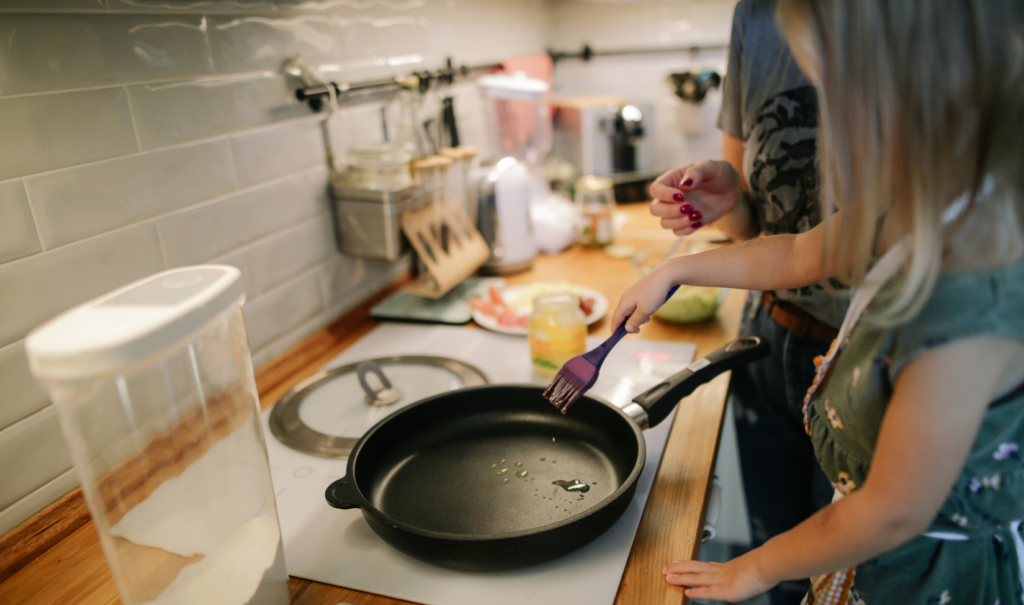
Many people are already wise to the fact that non-stick surfaces can be detrimental to one’s health, especially since they scratch, chip and flake very easily.
“Exposure to Teflon® resins at temperatures above 393°F may produce a condition termed polymer fume fever characterized by flu-like symptoms such as chills, fever, body aches, nausea and occasional vomiting…”
The Federal Aviation Agency Occupational Health & Safety Bulletin.
A chemical, C-8, used to make non-stick coated pans has been linked to birth defects in humans and cancer in laboratory animals. The chemical is also present in the blood for up to 4 years and can show up in breast milk.
Cast Iron Cookware
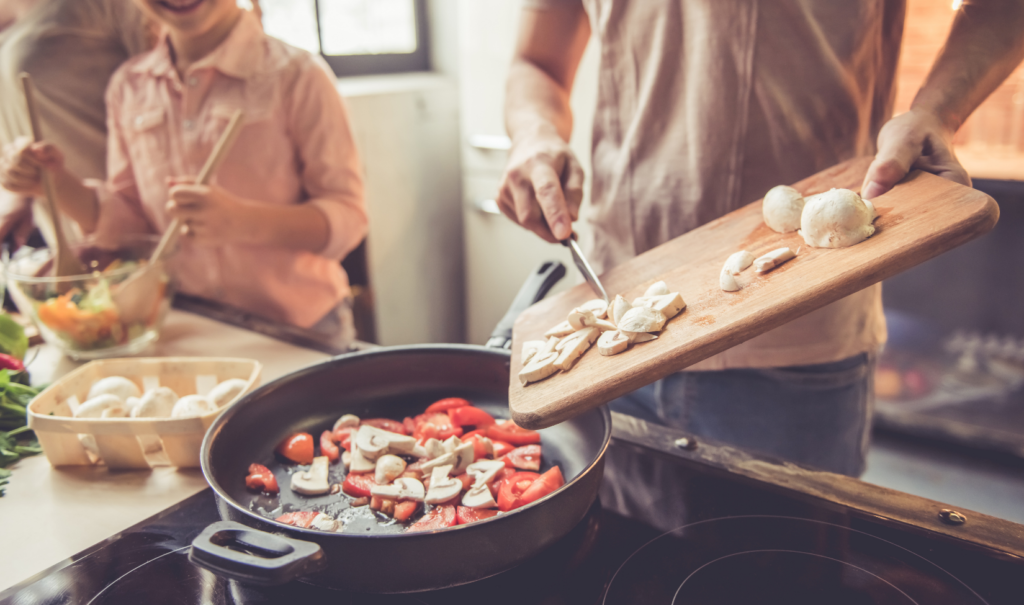
How about cast-iron cookware? Iron is the most porous of all metals, and when the iron heats up, the pores in the metal expand. When the iron cools, the pores contract (close), leaving the grease trapped in the pores and allowing the oil to turn rancid. Some people believe that they can get (nutritional) iron from a cast iron pot. In reality, iron comes in a ferrous and a ferric form. Ferrous iron is in your red blood cells and comes from certain foods, is more absorbable in the body1 and is extremely important for your body to function properly. Ferric, however, is the type of iron that comes from cast-iron cookware and your body cannot assimilate this metal as easily. Too much ferric can have significant negative effects on one’s health.
Cast-iron cookware is very durable, but iron is constantly leaching into the food, changing the enzymes in it. Iron can reach toxic levels in the body with regular use and becomes a pro-oxidant which causes stress, oxidation and eventually disease. While there is some evidence in a small study that iron containing cookware can potentially reduce iron deficiency anemia in children, further research is needed regarding both the efficacy and safety of this intervention according to the authors of the study.2 There is still a lot of debate out there about whether or not cast iron cookware is a good way to get iron into your diet. In my family we prefer to play it safe and get our iron from our food.
Aluminum Cookware
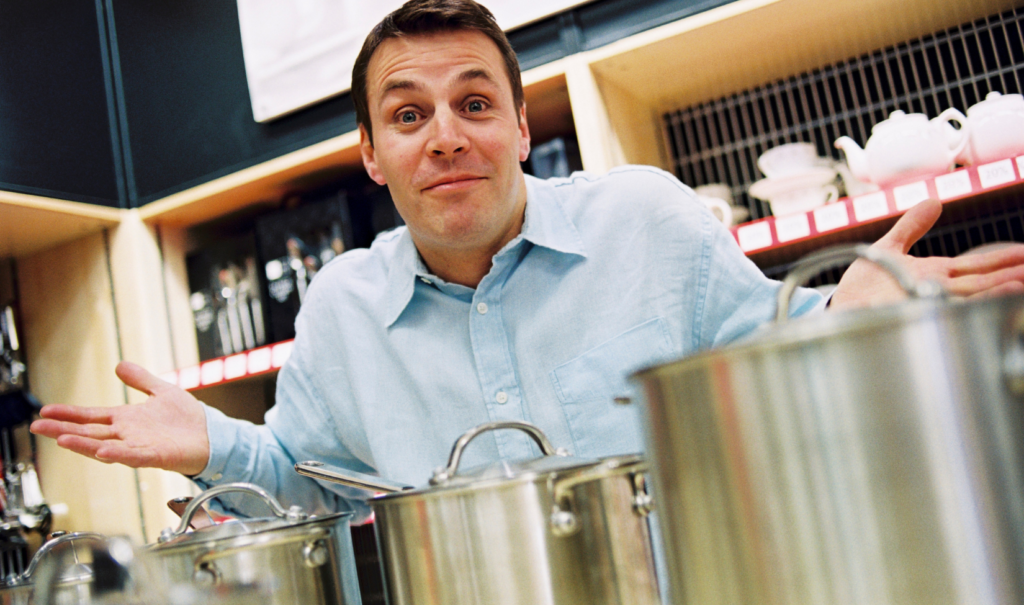
Aluminum cookware is one of the most common types of cookware to use, but it can be very toxic as this heavy metal is absorbed into all food cooked in it. The aluminum released into food during cooking ends up in your body. Excess aluminum has been associated with estrogen-driven cancers and Alzheimer’s Disease.
“All Vegetables cooked in Aluminum produce hydroxide poison which neutralizes digestive juices, producing stomach and gastrointestinal trouble, such as stomach ulcers and colitis.”
Dr. A. McGuigan’s Report on Findings for the Federal Trade Commission in Docket Case No. 540, Washington, D.C.
It is also worth noting that the sale of aluminum cookware is prohibited in many countries around the globe.
Other Types of Cookware
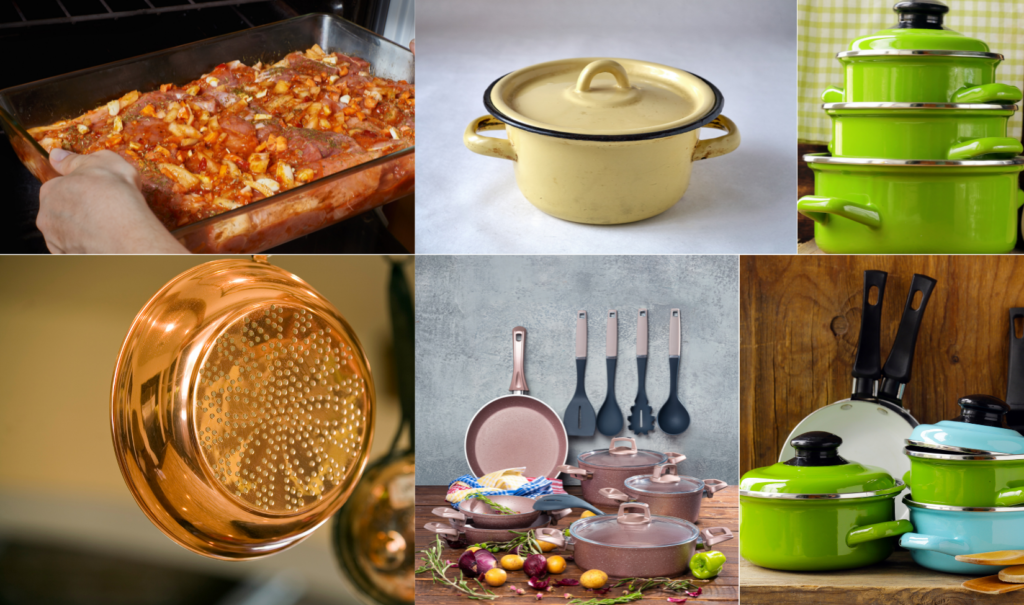
Glass, enamel and ceramic cookware seem pretty harmless (aside from them being notorious for poor heat distribution, causing foods to stick, burn, and chip off into food), but some may also contain lead and cadmium.
Copper cookware is popular because it conducts heat very well. However, it releases copper into the food and usually also has nickel in the coating, which is another toxic heavy metal and can be allergenic. If you do choose to use copper cookware (though I don’t recommend it), avoid cooking vegetables in copper pots. Copper can kill vitamin C, vitamin E and folic acid.
What I use
The cookware that I choose to use for my family and recommend to my clients is made of a non-porous stainless steel (316Ti, stainless steel with titanium added). Type 316 alloys are more resistant to general corrosion and pitting crevice corrosion than the conventional chromium (nickel austenitic stainless steels such as Type 304). 316 surgical stainless steel is used in various applications, such as surgical instruments, ocean oil rigs, nuclear waste materials, and of course cookware. 316Ti Titanium Stainless Steel Interior has demonstrated to provide higher resistance to chemical reaction with the acids and enzymes in food; protect quality, purity, and flavor of food; resist pitting; and resist corrosion and oxidation.
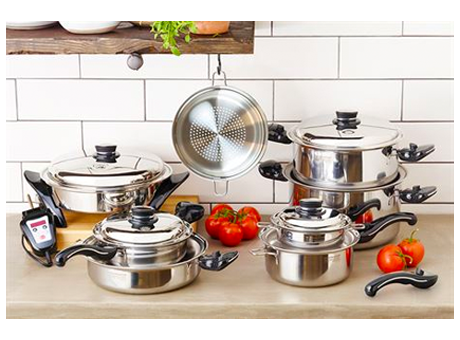
There are a few different companies that compete in this elite space of cookware. I choose to use the product produced by Saladmaster®. Not only do I feel secure preparing my food in 316Ti, but Saladmaster® also has a unique patented Vapo-ValveTM that allows you to know when to reduce the cooking temperature to maintain many of the vitamins and minerals; and it creates a semi-vacuum that locks in the moisture. Additionally, Saladmaster® has been around since the 1940s, and its products are manufactured by a company that has been around for over 100 years, making it one of oldest and most reputable companies in the cookware space; and the products come with a limited lifetime warranty. Saladmaster® cookware is a bit pricier than other brands, but the health benefits and energy savings of rarely needing to use my oven outweighs the costs by far. Additionally, I have had my cookware since 2008 and it still looks and works like new. Just by virtue of the fact that I will never need to replace my cookware makes the extra upfront cost well worth the investment.
1Vitamin and Mineral Safety 3rd Edition (2013) Council for Responsible Nutrition (CRN), pgs. 146-147 https://www.crnusa.org/sites/default/files/files/resources/CRN-SafetyBook-3rdEdition-2014-fullbook.pdf
2Alves C, Saleh A, Alaofè H. Iron-containing cookware for the reduction of iron deficiency anemia among children and females of reproductive age in low- and middle-income countries: A systematic review. PLoS One. 2019;14(9):e0221094. Published 2019 Sep 3. doi:10.1371/journal.pone.0221094
https://www.ncbi.nlm.nih.gov/pmc/articles/PMC6719866/
